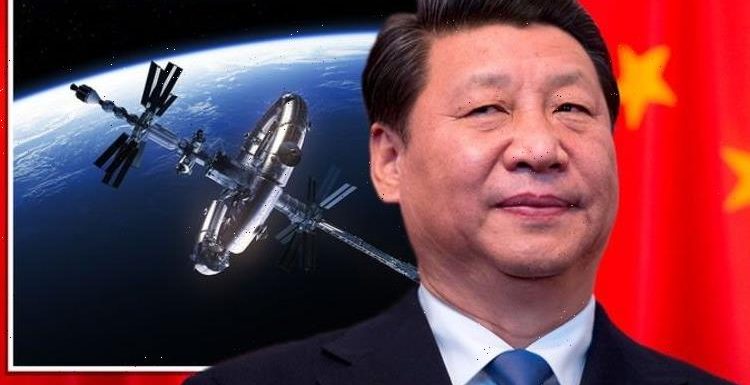
China: Chang'e 5's space probe collects moon samples
We use your sign-up to provide content in ways you’ve consented to and to improve our understanding of you. This may include adverts from us and 3rd parties based on our understanding. You can unsubscribe at any time. More info
The proposal was submitted by The National Natural Science Foundation of China among 10 projects designed to shift China’s space programme into fifth gear. With a probe on the Moon, a rover on Mars, and an operational space station in orbit, China is heavily investing resources into the human exploration of space. As part of the nation’s 14th Five-Year Plan – an economic relic of the Soviet era – scientists have been invited to study the engineering required to build an “ultra-large spacecraft spanning kilometres”.
A document published by the Chinese foundation states such as spacecraft would be “a major strategic aerospace equipment for the future use of space resources, exploration of the mysteries of the universe and staying in long-term”.
According to a report in South China Morning Post, the science foundation will fund five of 10 research proposals revealed earlier this month.
Funding for each project will amount to a staggering $2.3million (15million yuan or £1.68million).
But before the project is given the green light, scientists will first have to overcome the obstacles of building something so big off the planet.


For comparison, the International Space Station’s (ISS) biggest modules were delivered on 42 assembly flights – and the ISS only measures 356ft (109m) end-to-end.
This was followed by a total of 232 spacewalks – and counting – to assemble, maintain and upgrade the orbital lab since 1998.
The Chinese spacecraft’s parts would similarly have to be launched from Earth multiple times for assembly in space.
It would be, simply put, impossible to launch something on this scale from the planet.
The ISS is estimated to have cost £109.5billion ($150billion) – a cost that was shared between 15 nations, including the member states of the European Space Agency (ESA).
Chang'e-4: First footage released from the 'dark side of the moon'
The cost of constructing China’s spacecraft is bound to exceed this price tag many times over.
Earlier this year, China become the world’s second nation to put a functioning rover on the surface of Mars.
Following in the footsteps of NASA, the Zhurong rover touched down on May 14 in the Red Planet’s Utopia Planitia region.
And just two years before the Mars mission, the Chang’e 4 lunar probe landed on the far side of the Moon.


China’s latest milestone came with the launch of the Tinagong space station in April this year.
The small research laboratory orbits the planet between 210 and 280 miles (340 and 450km) above the surface and is operated by three Chinese astronauts.
Although still under construction, the space station welcomed its first crew in June this year.
China has been vying for its share of glory in space since the Fifties but has only made real progress in recent years.
Speaking to CNBC in June this year, Charles Bolden, retired astronaut and former NASA administrator, said the US has been trying to cooperate with Beijing for the better part of the last 10 years.
However, he said all attempts to connect have been met with obstacles from US legislators and Congress.
He said: “I’m personally very impressed and very encouraged by China’s progress, both in human spaceflight and in robotic spaceflight.”
In April this year, Chinese President Xi Jinping encouraged Chinese scientists to build ties and boost international cooperation in space exploration.
According to the state-run Xinhua News Agency, the President urged for the “peaceful use of space and the building of a community with a shared future for humanity”.
Source: Read Full Article